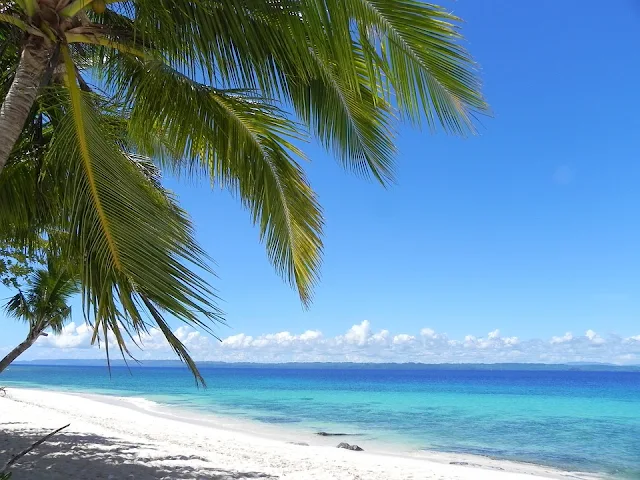How much do you
know about The Philippines? If you’re preparing to travel to this unique
country, then you need to know what to expect when you get there. Don’t
panic, there are no rigorous customs to follow nor should you be
scared for your life, because the country is safe, but some introduction is
more than welcome.
1. Weather and Its Ups and Downs
2. Practically Everyone Speaks English
3. Exchange Money with Caution
4. Various Modes of Transportation
5. Public Wi-Fi Everywhere but…
6. When in Traffic, Don’t Panic
7. Filipinos are Friendly and Religious
8. There Are Some Parts You Shouldn’t Go to
10. Be Careful when in the Toilet
Adam Ferraresi started his career as a web
developer and he loves his job from the day one. With time, as he progressed
with his skill, he found his passion for writing about many different topics
concerning web development. From that time, he has expanded his views and is
now writing on all sorts of different subjects. Adam is also a trusted writer
of wefollowtech.com. He’s stationed in Dallas, where he spends his free time
playing guitar and cooking for his friends.
The Philippines is actually very rich in history and amazing sites that are scattered all over 7000 islands
within the country’s border and chances are you will have a blast while you’re
there. Here are some general pointers to help you prepare and understand better
what you can expect on your travels through Philippines.
1. Weather and Its Ups and Downs
One of the first
things anyone will talk about when you mention Philippines is the humidity and
scorching sun. True, this doesn’t sound very promising, but much depends on
when you decide to go. The average yearly temperature is 26-28 degrees Celsius,
which in theory sounds like heaven. In practice, things aren’t that optimal
because you’ll sweat more than you knew you’re capable and the sunscreen will
become your best friend. The season from March to May is the hottest part of
the year, followed by the rainy season which lasts from June to November. The
best time for booking your trip is Tag-Lamig that lasts from December to
February when things cool down a bit, and when we say cool down, we mean, there
isn’t that much rain, it’s not so humid and the temperature gravitates around
27 degrees.
2. Practically Everyone Speaks English
This is a great
relief for many travelers who don’t speak Tagalog – the local language that is a beautiful mix of Spanish,
English and Native American languages. Chances are you won’t understand a word
what they’re saying in their language, but more often than not, they will
understand your English and respond quite well.
3. Exchange Money with Caution
Philippine Peso
is the local currency, and for $1 you will get around 50₱. More than other countries, Philippines
are the place you can lose a nifty sum of money when exchanging currencies if you
don’t pay attention. Some locals will try to convince you that their price is
the ongoing rate, but don’t fall for it, check in a couple of places before you
find something that doesn’t sound like you’re being robbed. There is also a
possibility of paying “the tourist price” for a product or a service, just
because locals believe you can afford it. If a price sounds fishy, don’t take
it for granted and be sure to haggle.
4. Various Modes of Transportation
Depending on
your budget, where you want to go and how quickly you want to get there, there
are different routes and vehicles you can take. If you like to wing it on your
own fearlessly, you can actually rent a motorcycle for $12, which is
ridiculously cheap. If you’re in for a taste of local culture, give tricycles a
go – they are a bit cramped, but they are a great way to move around the cities
and explore the sites. Jeepneys
are the most beloved mode of transportation for Filipinos and are also most
affordable. All of them have their routes, they are quite crowded and
understanding where they’re going can be challenging. If you want to cross
bigger distances, we suggest using either a bus (with AC!) or flying.
5. Public Wi-Fi Everywhere but…
If you’re
staying in the cities, you will find that free public Wi-Fi is available almost
everywhere, even in most buses. Wherever you go, whether it’s a restaurant,
your accommodation or even a shop, you will be able to tap into an open Wi-Fi
network. And while that’s grand for when we need Internet connection ASAP, it
isn’t optimal for online security because public networks are nesting places of
hackers and malware. It would be wise to equip yourself with strong antivirus
software and a VPN to keep your privacy in check. There are many good VPN
services that can offer you protection without
you having to pay a small fortune for it.
6. When in Traffic, Don’t Panic
Both Americans
and Europeans alike are overwhelmed when it comes to traffic in the Philippines
and for good reason. We’re not used to the kind of “disorganization” that’s
happening on the streets, but you would do well to just roll with it. One
important thing to note is that Filipinos drive on the left-hand side, like
the U.S., so don’t let that confuse you. Also, if you rent a motorcycle, be
extra careful until you get accustomed to the party that is traffic in
Philippines.
7. Filipinos are Friendly and Religious
This might come
as a surprise, but over 80% of the Philippines’ population is actually Roman
Catholic, due to the fact that they have been a Spanish colony for over 333 years. This doesn’t mean that the locals are rigid and stern; on the contrary,
they are friendly and open-minded, but they practice their religion and are
very serious about it. Filipinos are in general very hard-working and easy to
get along with, not to mention that they are very pleasant and professional
around their guests, so you should have a great time socializing with them.
8. There Are Some Parts You Shouldn’t Go to
The southern part of the Philippines isn’t recommended for tourist visits, no
matter how much of an adventurist you are. This is the part of the country
mostly run by Islamic militia and it’s really not safe for anyone that isn’t a
Filipino, even a big number of locals avoid it. Also, on islands like Borocay, you will find a lot of militia and security in the tourist populated area, but
they’re nothing to be afraid of, they’re there to protect you. They are
actually quite nice and will gladly help you in case you need directions.
9. Fresh Produce Everywhere!
This is paradise
for everyone who adores fresh fruit, vegetables and anything that can be made
from it. Don’t be surprised to see people on the streets selling beautiful
fruit and juices, which taste divine. You don’t have to worry about GMO and
such, pretty much anything you see is completely organic and completely
delicious.
10. Be Careful when in the Toilet
This sounds very
ominous, but it’s just a bit of a catch you need to get used to so that it
doesn’t catch you off guard. In most toilets, there is no toilet paper in the
stall, but you have to get it from a dispenser in front. This is something
definitely worth remembering so you don’t get caught up in a prickly
situation without toilet paper and no one to bring it to you.
The Philippines
has a lot to offer to everyone visiting this beautiful
country and there is really no reason not to travel there. All you need to do
is decide which one of 7000 islands you want to go to, pack your bags and enjoy
all the beauty you will encounter.







Nice article, however, you say "the local language that is a beautiful mix of Spanish, English and Native American languages". Did you mean 'Native American languages'? Because Native American languages are, for example, Navojo, Cree, Cherokee, Apache, Choctaw, Blackfoot etc.
ReplyDeleteGreat tips. I have never been come to this country. Still in my dream. Thank you for sharing kind info
ReplyDelete